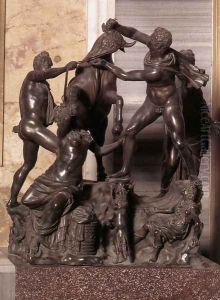Antonio Susini Paintings
Antonio Susini was an Italian sculptor, primarily known for his exquisite bronze statuettes, which were produced during the late Renaissance period. He was born around 1558 in Florence, Italy, a city that was a vibrant center of art and culture at the time. Susini is particularly noted for his work as a master bronze caster and his association with Giambologna (properly known as Jean Boulogne), one of the most important and influential sculptors of the late 16th century.
Working in Giambologna's workshop, Susini became an expert in the lost-wax casting technique, a method used to produce metal sculptures that allowed for great detail and precision. After Giambologna's death in 1608, Susini continued the master's legacy by reproducing many of his works. He is credited with helping to disseminate Giambologna's style across Europe by creating these high-quality bronze replicas.
Susini’s own work often reflected the Mannerist style that was characteristic of the later stages of the Italian Renaissance, with elongated forms and an emphasis on grace rather than on the proportion and harmony that were favored during the earlier Renaissance. His pieces frequently featured mythological and allegorical subjects, which were popular at the time.
By the time of his death in 1624, Antonio Susini had established himself as a prominent figure in the art of bronze sculpture. His works were collected by prestigious patrons, and his influence extended well beyond Italy. Today, Susini's sculptures can be found in various museums and collections around the world, and they continue to be admired for their craftsmanship and artistic beauty.
